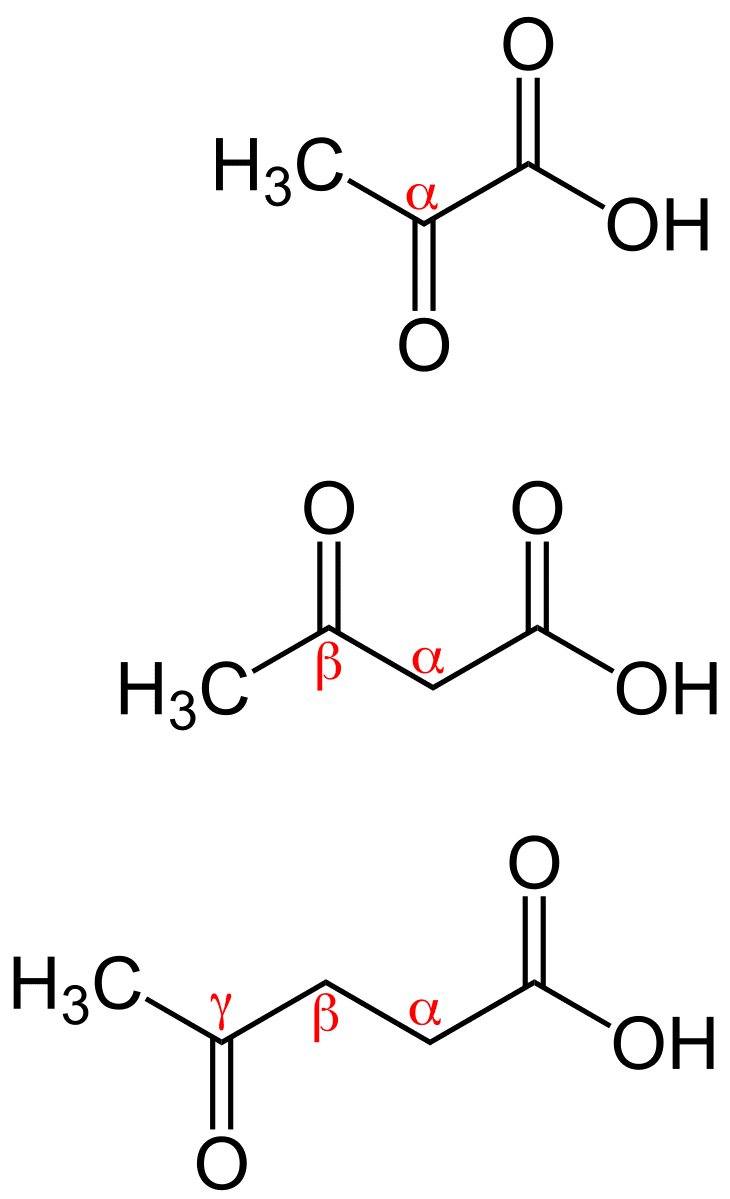 | ||
Keto acids or ketoacids (also called oxo acids or oxoacids) are organic compounds that contain a carboxylic acid group and a ketone group. In several cases, the keto group is hydrated. The alpha-keto acids are especially important in biology as they are involved in the Krebs citric acid cycle and in glycolysis.
Common types of keto acids include:
Keto acids appear in a wide variety of anabolic pathways in metabolism, across living organisms. For instance, in plants (specifically, in hemlock, pitcher plants, and fool's parsley), 5-oxo-octanoic acid is converted in enzymatic and non-enzymatic steps into the cyclic class of coniine alkaloids.
When ingested sugars and carbohydrate levels are low, stored fats and proteins are the primary source of energy production. Glucogenic amino acids from proteins are converted to glucose. Ketogenic amino acids can be deaminated to produce alpha keto acids and ketone bodies.
Alpha keto acids are used primarily as energy for liver cells and in fatty acid synthesis, also in the liver.
